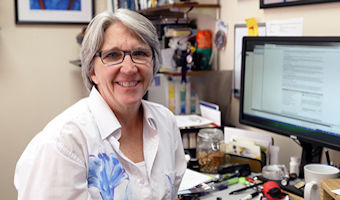The Physics & Astronomy Colloquium Series presents Sarah Wyatt, of Ohio University , on “Proteomics and Transcriptomic Analysis of Arabidopsis Seedlings in Microgravity Reveal Novel Regulatory Pathways”, on Friday, Jan. 25, at 4:10 p.m. in Clippinger Labs 194.

Sarah Wyatt
Abstract: A plant’s ability to sense and respond to gravity is critical to its proper growth and development. As humans begin to explore extraterrestrial environments, plants will be a vital source of food and bioregenerative life support. However, plants have evolved exclusively under the 1g conditions of Earth and may not be optimally adapted for beyond-Earth cultivation. Gaining an understanding of how plants will grow under the conditions of low earth orbit (0g), Earth’s moon (0.16g), and Mars (0.38g) is critical to the success of human space exploration. Low earth orbit provides a wholly unique opportunity to study plant gravity response at the molecular level. RNA sequencing technologies have advanced substantially in recent years, and few if any studies have comprehensively examined gene expression with the resolution provided by next generation sequencing. Pairing RNAseq data with the assessment of individual protein abundances provides a far more complete picture of the molecular environment within plants subjected to microgravity. RNA and proteins were extracted and subjected to paired-end RNA sequencing and protein mass spec analysis, respectively, and protein data were further analyzed for post-translational modifications. In total, 1,974 genes, 94 soluble and 79 membrane proteins and were found to be differentially expressed between the space-flown samples and ground controls. Further analysis revealed a general incongruity between the RNA and protein datasets, highlighting the value in using multiple molecular approaches to delineate the effects of microgravity environments.















Comments